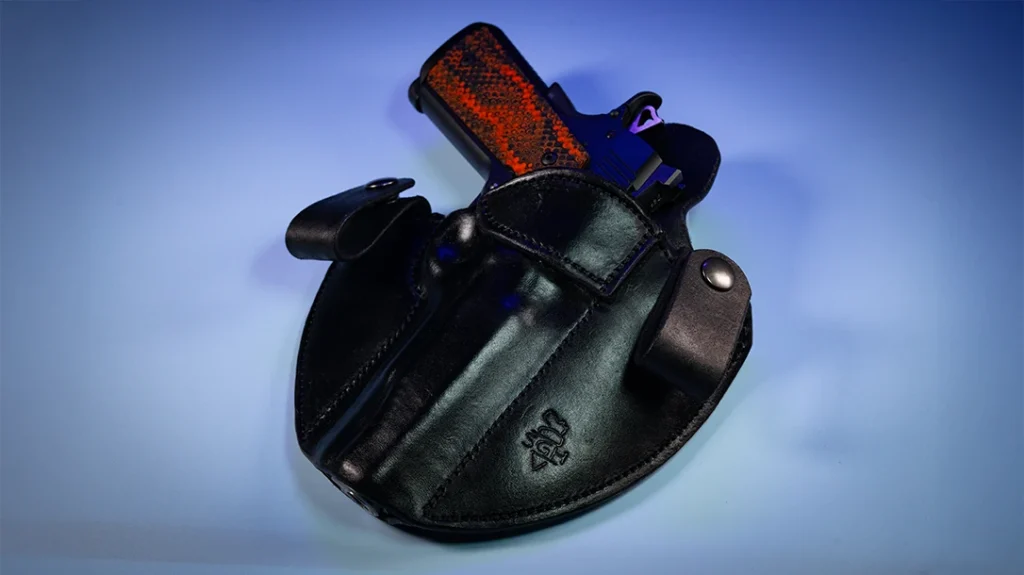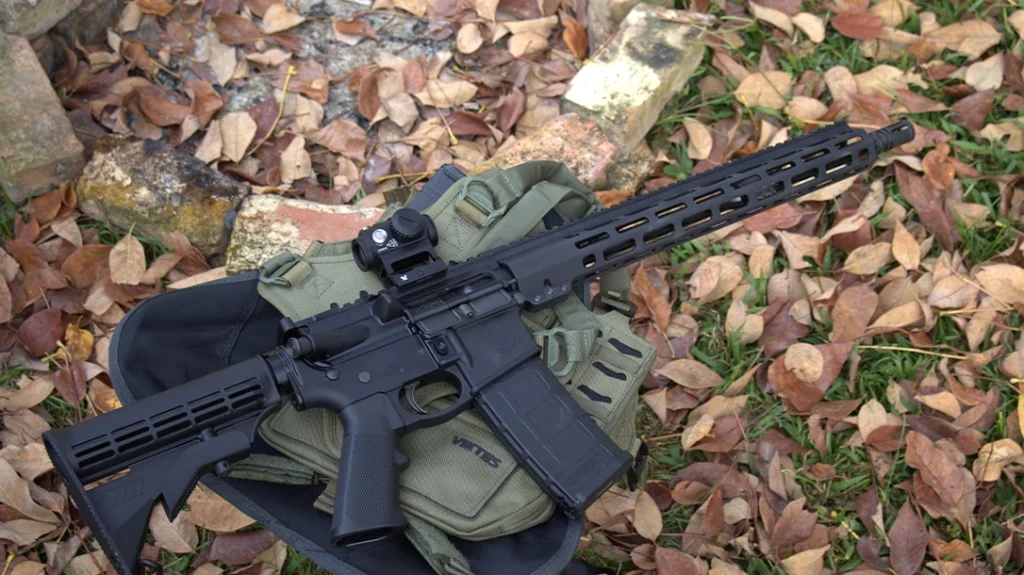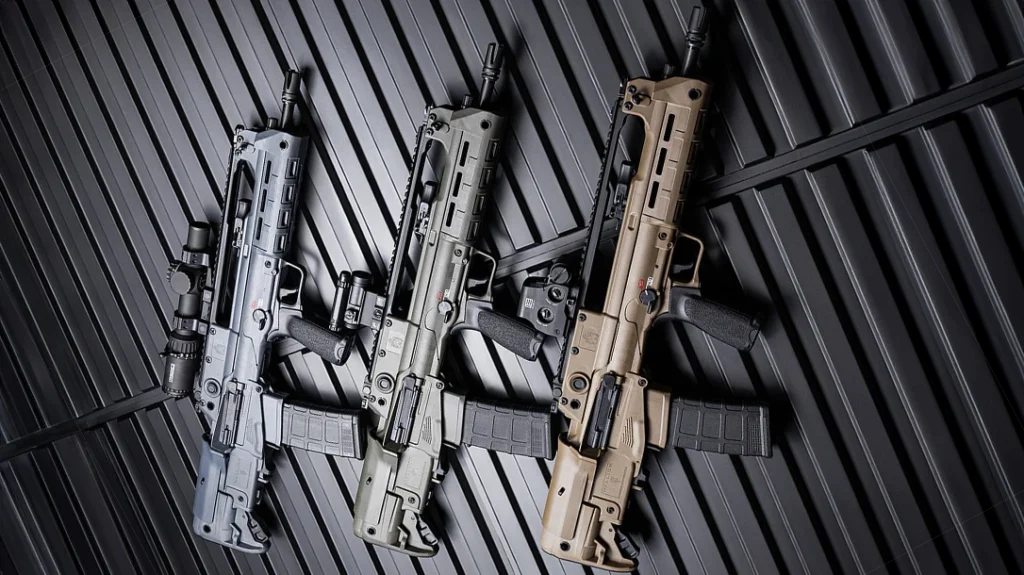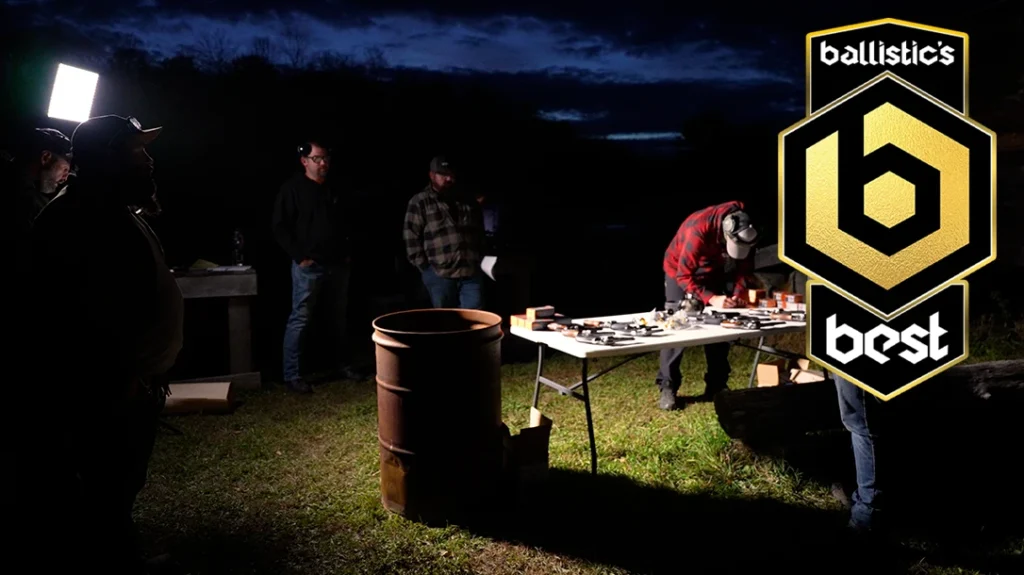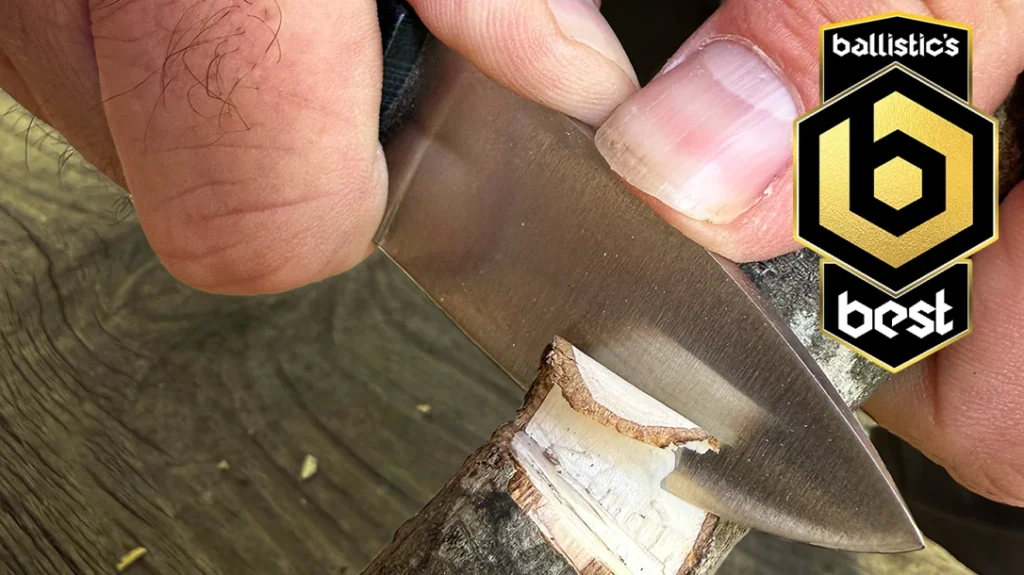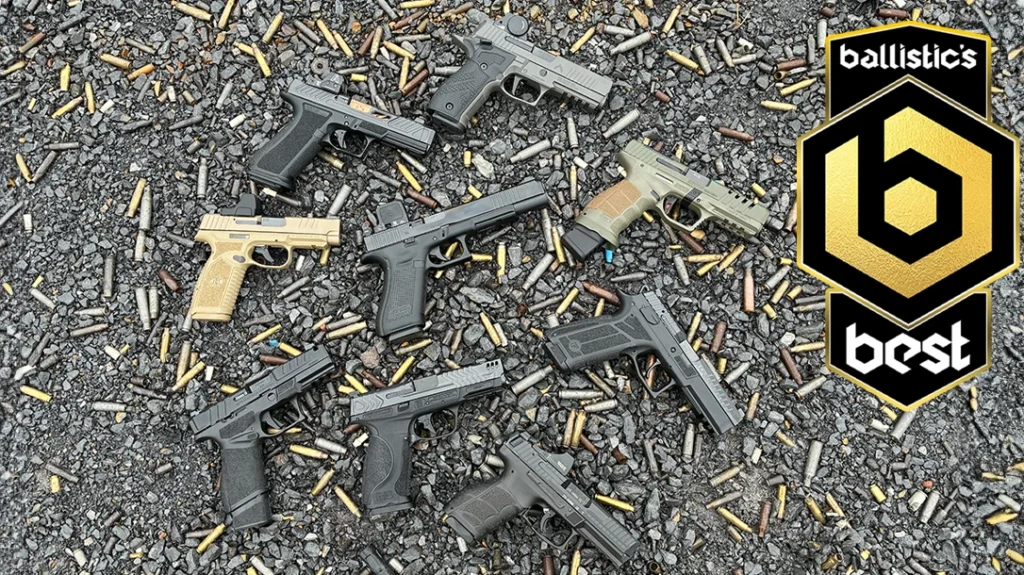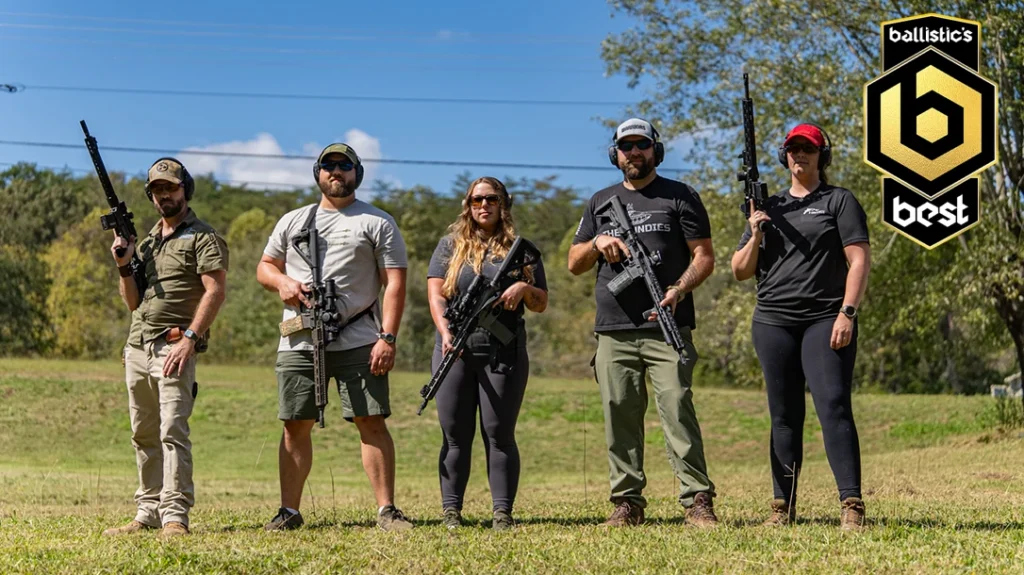North American Arms (NAA) of Provo, Utah, has been making the same basic stainless-steel, single-action, 5-shot mini-revolver for almost 35 years. They are chambered for .22 Short, .22 LR, and .22 WMR (Magnum). Sizes vary from the tiny NAA-22S with a 1.13” barrel to the NAA-1860-6 “Earl” with a 6” barrel. And they are all 5-shooters. The latest in the North American Arms concealed carry wheelgun catalog is its new Sentinel, chambered in .22 WMR.
The North American Arms Sentinel
Originally, the NAA mini-revolvers were loaded by thumbing back the hammer until the first “click,” pressing a button on the end of the cylinder pin, pulling out the pin, and then removing the cylinder. The cylinder pin could be used to poke out the spent cartridge cases. Once loaded, the cylinder is put back in place, along with the cylinder pin.
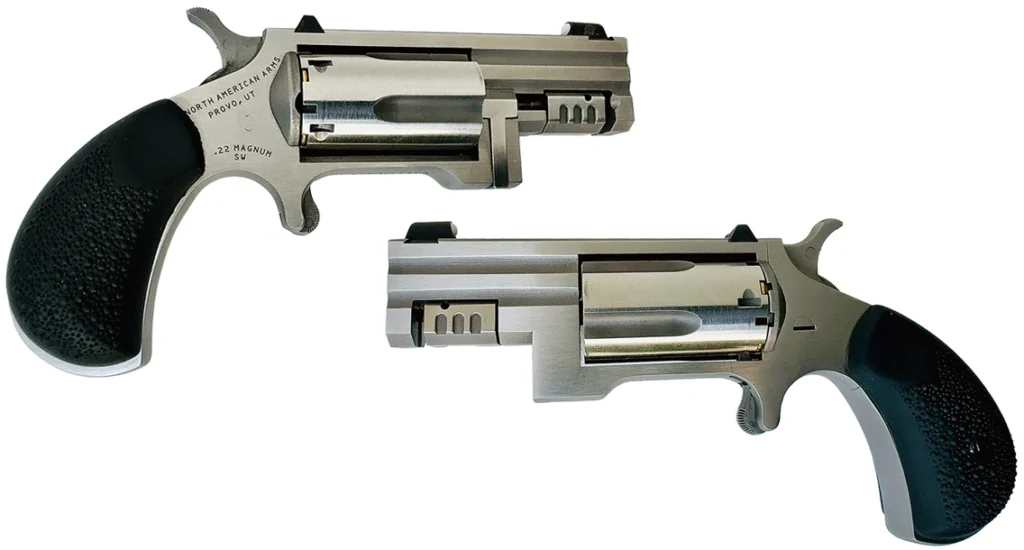
Advertisement — Continue Reading Below
During the ensuing years, NAA has developed different cylinder pin-locking designs and mini-revolver versions. These have a tip-up, hinged frame, or swing-out cylinder. The newest offering is an amalgamation of the NAA Pug and the Sidewinder.
The Hybrid Sentinel NAA-SNT
One thing you can say about NAA is that it is always looking to improve its firearms. The Sentinel, chambered in .22 WMR, is a marriage of the swingout cylinder from the Sidewinder (NAA-SW) and a modified cylinder pin release from the Pug (NAA-PUG-D).
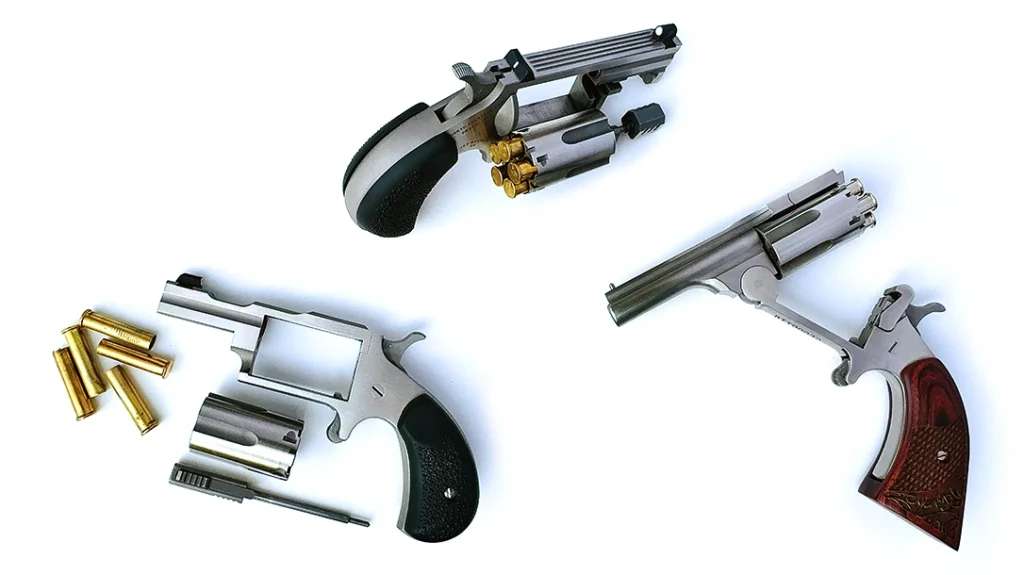
Advertisement — Continue Reading Below
In this case, the cylinder locking block is pulled forward. This allows the cylinder to swing out to the right of the frame window. The locking block on the SNT is bigger and easier to manipulate than the cylinder pin release on the Sidewinder.
You won’t get a rapid reload in either case. However, unlocking and opening the cylinder on the SNT is a bit faster and more convenient.
The cylinder and barrel sides are fluted. I found it expeditious to pull forward on the cylinder pin release block and give the left side of the cylinder a slight nudge to swing it out. Pushing back on the cylinder pin/extraction rod moves the empty cartridge cases out of the chambers about 0.25”. Thus, allowing them to be plucked out.
Advertisement — Continue Reading Below
Like all NAA mini-revolvers, the SNT is crafted from 17-4 stainless steel. The cylinder, frame sides and top have a brushed finish, while the bottom of the frame and grip frame has a matt finish.
The metal-to-metal fit is top shelf. However, the textured black rubber grips were a bit off. Serrations run the length of the top-strap/barrel/frame unit; there is a side plate on the left side of the frame.
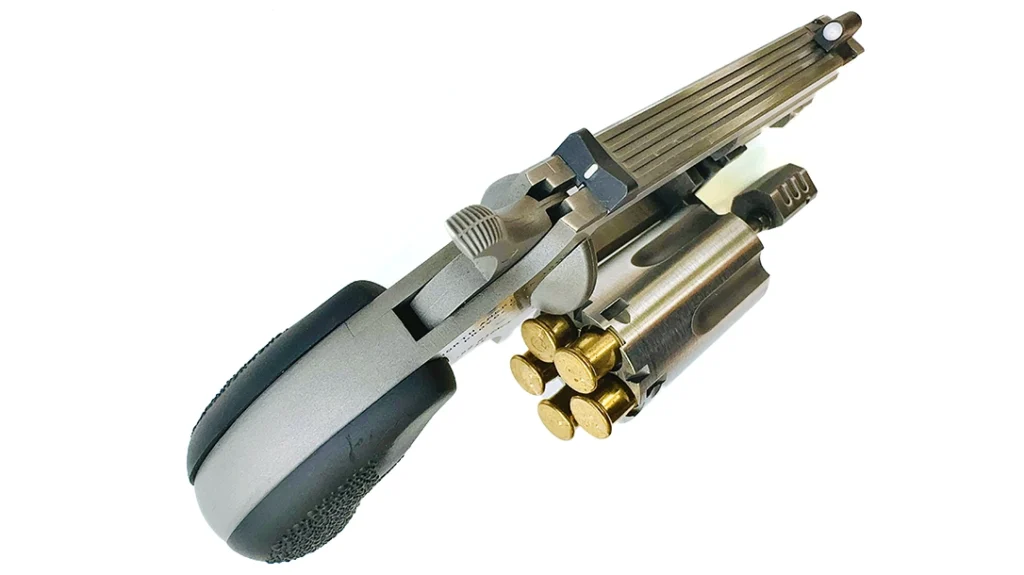
Advertisement — Continue Reading Below
Standard sights are XS Express. The rear sight is mounted in a dovetail with a downward-sloping V shape and a white dash in the center. The front XS sight has a big white dot and is dovetailed into the barrel. A Tritium front sight is optional.
North American Arms Action
For the uninitiated, all NAA mini-revolvers are single-action—the hammer must be cocked for each shot. Said hammer has a high spur with serrations for good thumb purchase. Correspondingly, the firing pin is integral with the hammer nose.
It has a spur trigger that is partially protected by an extension of the frame. In addition, the tip of the trigger face is serrated.
Advertisement — Continue Reading Below
For safety, there are small notches in the rear of the cylinder that the hammer nose can be lowered into. This keeps the firing pin between chambers. Another series of notches serve as loaded chamber indicators, allowing a small visual of the cartridge rim.
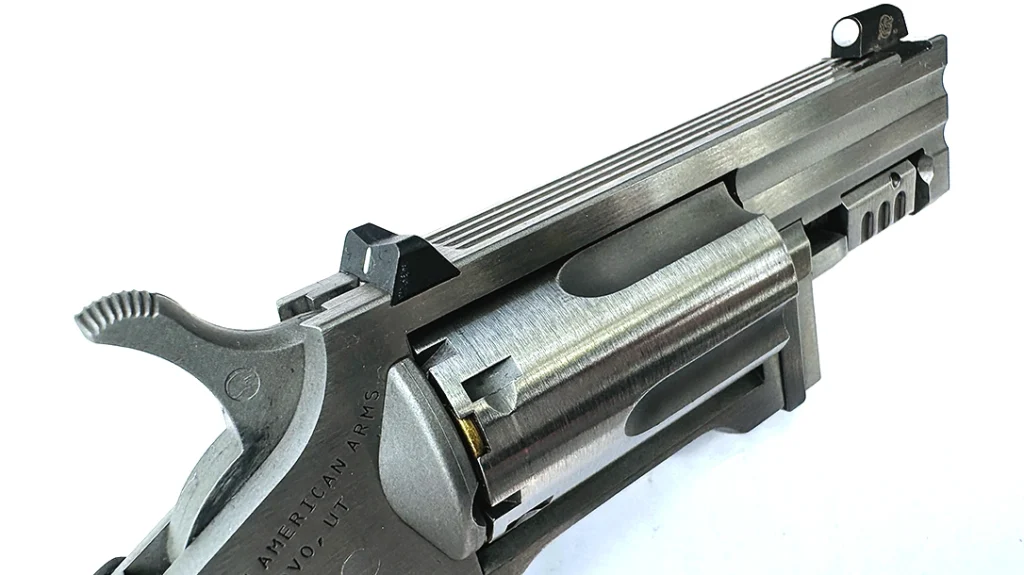
By the way, each NAA mini-revolver comes in a nice metal carrying case with a padded interior and key lock. I’ve used the cases to carry small handguns in checked baggage on airline flights.
Advertisement — Continue Reading Below
Shooting evaluation
To “burn some powder” with the Sentinel, I selected five different .22 WMR/Magnum cartridges. A couple are more useful for self-protection than the others.
From CCI is the A22 load, a hunting round, with a 35 gr. Game Point bullet. Hornady provided its Critical Defense cartridges that have a 45 gr. FTX bullet, which has a hollow nose with a synthetic cap. I received some Remington Magnum Rimfire cartridges—another hunting load with a 40 gr. pointed, JSP bullet.
From Speer is the Gold Dot Personal Protection/Short load with a 40 gr. GD-HP bullet. Winchester sent some Super-X Subsonic loads with a 45gr. lead bullet that looks like a miniature SWC-HP. It is reduced velocity/noise for small critters.
Advertisement — Continue Reading Below
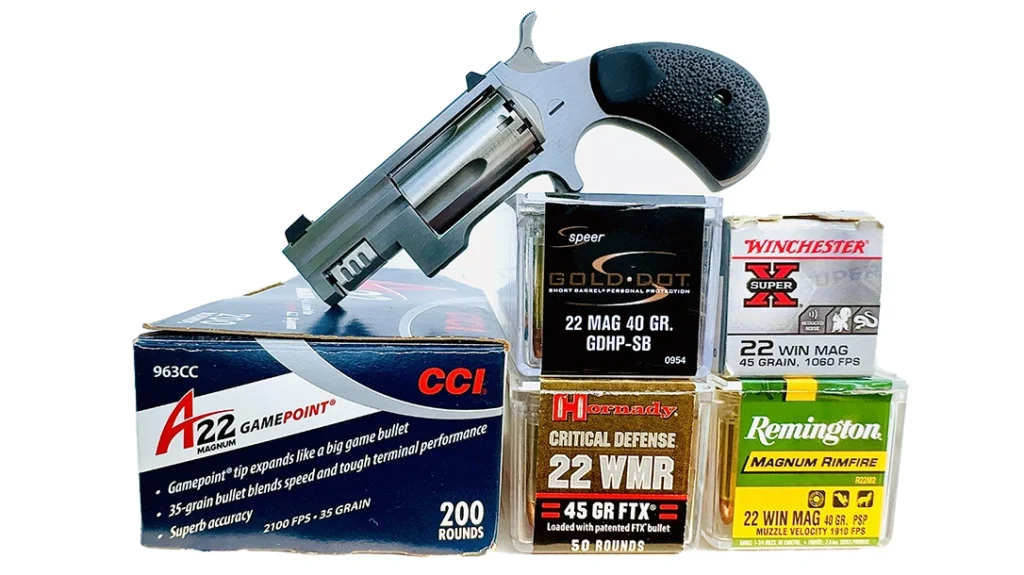
Like most of the other minis, the NAA-SNT is not a target gun. It is meant primarily for close-up and personal defense engagements. With this in mind, my accuracy potential evaluation began on an indoor range. The distance to the oval-shaped bullseye targets was 12 feet.
Shooting was done from the bench, using a sandbag rest. The XS Express sights are designed for fast acquisition and a “flash” sight picture. Getting a traditional sight picture is not in the cards.
Advertisement — Continue Reading Below
I held the top of the white dot front sight even with the top of the rear sight, which cut the round white dot in half. My point of aim was the center orange oval of the target. The point of impact was somewhat unpredictable. I had a few misfires, and a few of the bullets key-holed.
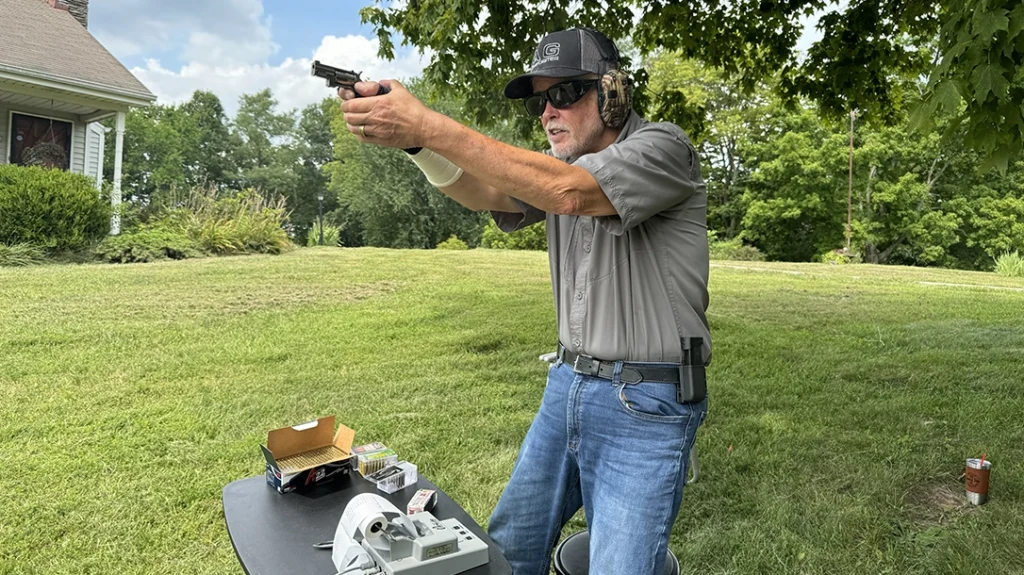
Three 5-shot groups were performed with each test cartridge. The best group measured 1.17” and was made with the Remington ammunition—it was also the best centered. The overall average for all the groups combined was 2.29”.
Running Drills with the Sentinel
Bullet velocity measurements were done outdoors using my Oehler Model 35P chronograph. You can see the velocity data and accuracy test results in the Performance Table (below).
While outside, I did a short practical shooting exercise with the NAA-SNT. I attached a reduced-size BC IPSC practice target on my portable stand and backed off 4 yards. The Sentinel was loaded with the hammer down in a cylinder safety notch. I had the little wheelgun in an NAA-supplied pocket holster, inside my right-front trouser pocket.
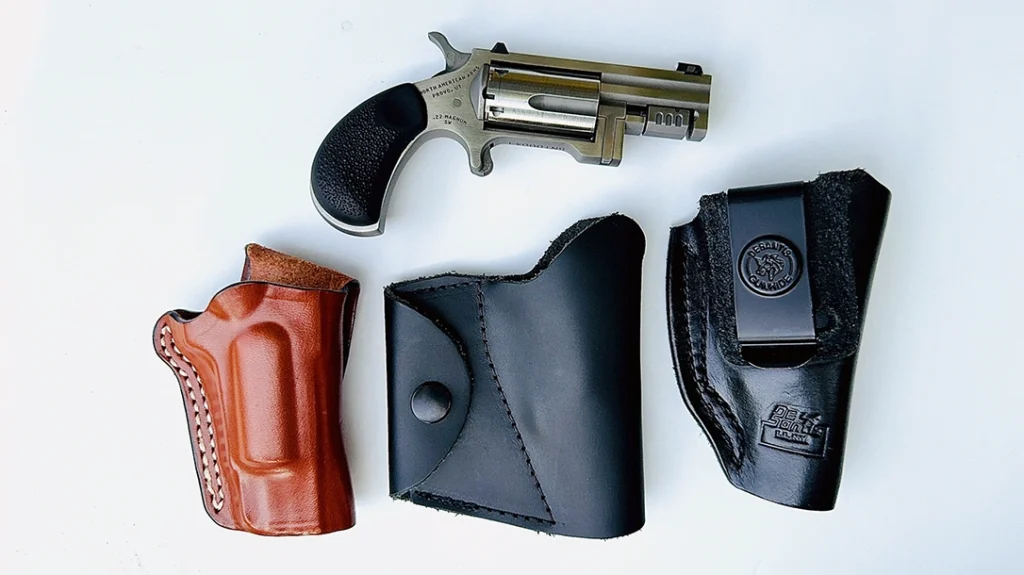
I gave the verbal command, “Stop, drop the knife!”
Then, I did a side-step, drew the gun from my pocket, and fired all five shots as fast as I could cock the hammer and press the trigger. I used a two-handed hold and isosceles stance, putting the big white-dot front sight on the target.
This was done with all five of the .22 Magnum test cartridges.
Post-test Considerations
Of the 25 shots fired at the IPSC target, I had one miss, one “nick,” and a misfire. Most of the hits were left of center in the C and D scoring zones; I had 3 A-hits. I took one aimed headshot that hit the A-zone.
On a life-size target, 98% of these impacts would’ve been in the “boiler room.” Would that stop a determined attacker? For example, the Speer Gold Dot load at 957 FPS produces 81.3 foot-pounds of muzzle energy. Not much, but better than nothing.
Rule one: have a gun. I can’t recommend the NAA-SNT as a primary EDC. At best, it’s a backup, and if you’re an undercover officer in a deep-cover operation, it might be all you can surreptitiously pack without being “made.”
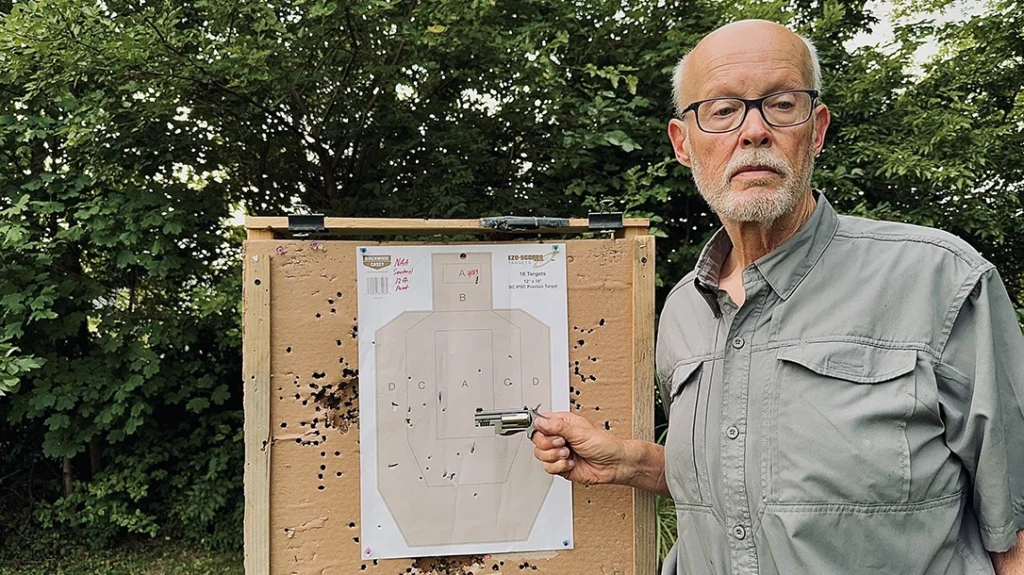
Parting Shots
A few recommendations:
If you are drawing from the pocket, put your thumb on the hammer while the gun is pocketed to prevent it from snagging on the pocket liner.
While closing the cylinder after loading, be sure the wider top part of the cylinder pin locking block is up. I know that might be hard to do in a stressful situation, but you’re most likely only going to get five shots anyway. Try to get the first one in an eye socket.
You noted that I had some misfires. Be darn sure that the load you decide to carry is going to go “bang” each time you press the trigger. Buy different brands of ammo and see which works 100% of the time. Then buy more of that ammo and get out there and practice.
You can buy the NAA-SNT-C, which gives you a .22 LR conversion cylinder and makes practice cheaper. The Sentinel does have a place in your defensive “arsenal,” but it requires user dedication.
For more information, please visit NorthAmericanArms.com.
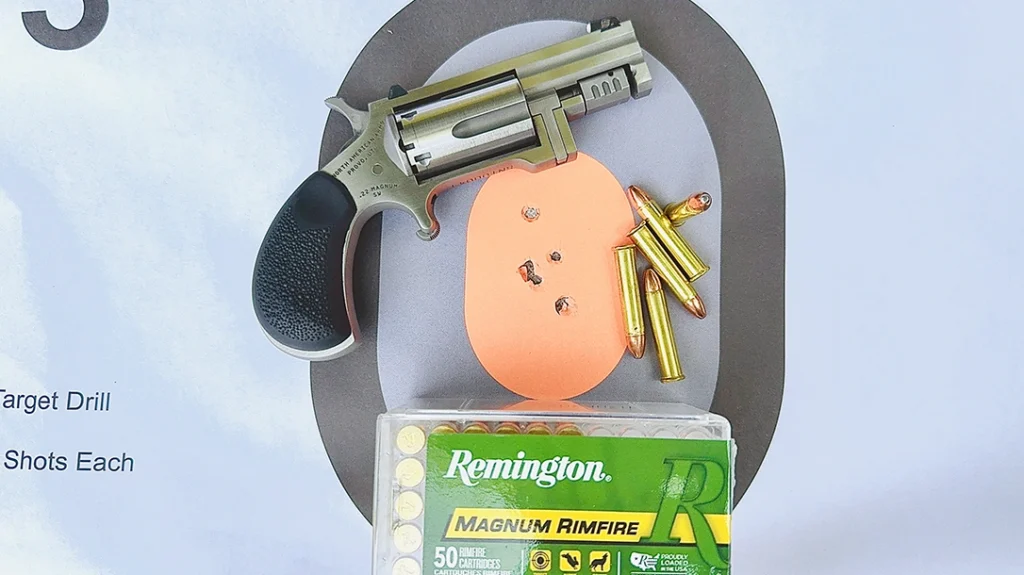
North American Arms Sentinel Specs
| Mechanism | Single action revolver |
| Caliber | .22 WMR (Magnum) |
| Capacity | 5 cartridges |
| Barrel | 1.425 in. |
| Overall Length | 4.9 in. |
| Empty Weight | 6.8 oz. |
| Sights | Fixed XS Express rear and Express Dot |
| Finish | Brushed stainless-steel |
| Stocks | Textured black rubber |
| MSRP | $399.00 |
Performance
| Cartridge | Ave. Velocity | Best Group | Average Group |
| CCI A22 35 gr. Game Point Polymer-Capped Hollow Nose | 972 FPS | 1.71” | 2.83” |
| Hornady Critical Defense 45gr. FTX-HP | 917 FPS | 1.74” | 2.10” |
| Remington Magnum Rimfire 40gr. Pointed JSP | 927 FPS | 1.17” | 1.91” |
| Speer Gold Dot Short Barrel Personal Protection 40 gr. GDHP | 957 FPS | 2.72” | 2.81” |
| Winchester Super X Subsonic 40 gr. Lead HP | 622 FPS | 1.45” | 1.80” |
NOTE: Bullet weight measured in grains, velocity in feet per second 10 ft. from the muzzle by an Oehler Model 35P chronograph, and accuracy in inches for three 5-shot groups at 12 feet.

